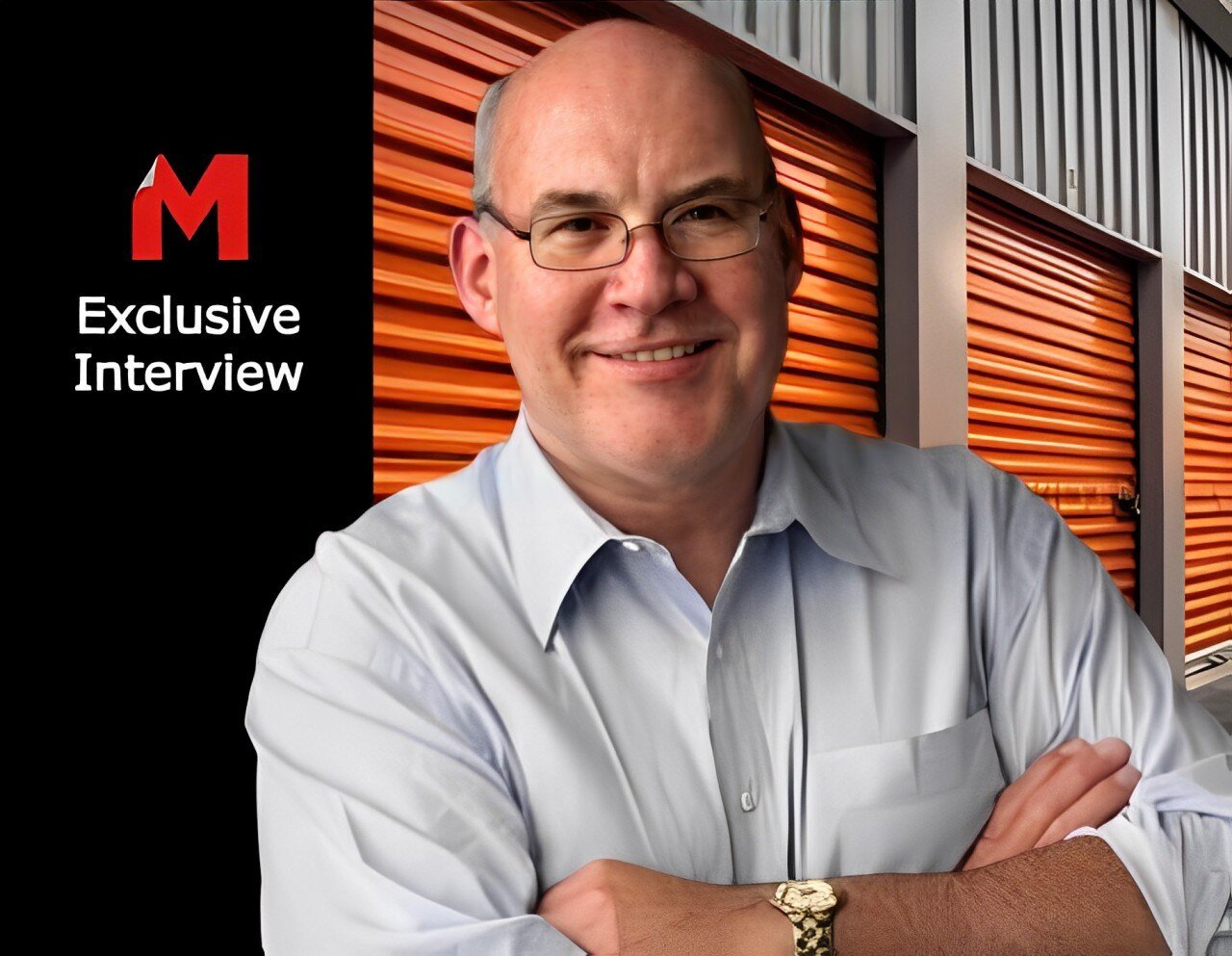Where’s The Capital?
Finding Funding For A Growing Industry
When asked about the availability of capital for self-storage owners and investors, Shawn Hill, a principal of The BSC Group in Chicago, has a couple of standard quips that he likes to use, and they are very pertinent to business today. Referencing an old Baskin-Robbins commercial, Hill’s first one-liner goes like this: “There are reasons they make 31 flavors of ice cream, and that’s how it works in the financial markets as well.” His second one-liner is a little better: “They only print money in one place, but there are a lot of different ways to package it.”
Those two japes pretty much sum up the market for the self-storage industry. If one needs capital to expand, acquire, renovate, or just about anything else, one can turn to national, regional, and local banks as well as credit unions, commercial mortgage-backed security lenders, private sources, Small Business Administration, bridge lenders, and even equity players. In fact, according to industry veterans such as Aaron Swerdlin, an executive managing director with Newmark Grubb Knight Frank in Houston, the biggest concern might there is too much competition amongst lenders, which hasn’t happened yet, but could lead to lower standards.
“We are spending a lot of time looking at capital, where borrowers want to refinance debt and take out additional equity for further investments, do a straight cash-out component or construction component, or do some kind of equity recapture to improve a property or buy another,” says Noel Cain, a managing partner of the Capital Markets Group at the Tampa-based BayView Advisors. “Everyone is in a growth mode, which is natural considering where the economy is now and how self-storage is doing.”
Indeed, everyone on the capital side of the self-storage industry could boast record or near-record loan volume in 2015, and almost all are predicting the same heavy flow of business in 2016. However, self-storage, like other commercial real estate niches, will be buffeted by outside economic events—some positive, some detrimental.
The Good News
Let’s start with the good news first. Back in 2006 and 2007, when the economy was still booming and the crash hadn’t yet happened, the self-storage industry was expanding rapidly. As a matter of fact, so many 10-year loans were made that piled together they could stuff a cavernous bank vault. Those loans will start coming due this year and will need to be refinanced. The interesting bit is that the Federal Reserve’s move to start increasing interest rates might mean some borrowers will push to pre-pay. Or as Neil Gussis, co-founding principal of CCM Commercial Mortgage in Chicago, notes, the commercial loan balloon combined with a rising rate environment “will create some level of demand and urgency.”
So, starting in 2016, there will be a rush of loans to refinance. The second event to consider is the Fed’s move to boost interest rates this past December. The country could be entering an environment of rising interest rates. That might affect the market long term, but most pundits expect little change going into 2016.
“The rise in interest rates won’t slow the pace of transactions,” says Gussis.
Hill makes the same prediction. “The rise in interest rates is not likely going to have meaningful impact. There is a huge volume of loans coming due over the next few years,” he says. “Most people with maturing debt are going to need to transact via a refinance or sale. For all markets, borrowers have excellent options. For capital, you can turn in any direction you like and you will probably find something. The capital markets are readily flowing.”
Talonvest Capital, based in Irvine, Calif., totaled more than 100 separate property financings across the country in 2015. About 65 percent of those deals were CMBS, followed by banks loans, then insurance company loans and, to a much smaller extent, credit union financing. Eric Snyder, a principal at Talonvest, predicts the same amount of deal flow in 2016, except the capital sourcing will change, with CMBS percentage dropping to 45 to 50 percent.
The reason for the change is what will probably be the biggest impact on capital markets in 2016: regulatory shake-up. After the Great Recession, Congress implemented a number of capital markets regulatory changes, mostly under the Dodd-Frank Act, that will be realized this year. Some will affect the CMBS market.
Regulation AB, for example, requires any sponsor of CMBS securitization to have a senior executive sign off, saying, in effect, the executive is aware of any material items as it relates to loans in the pool. “This may cause some lenders to pull out of the market because someone at the lending institution has to sign personally on that,” explains Eric Snyder, a principal at Talonvest. “Or, it may cost the lending institution more money to hire people to do the added due diligence.”
The second change will occur in December 2016, when new regulations will require anyone doing a CMBS loan to maintain five percent of the loan pool. That’s five percent that cannot be sold.
“The talk on the street is that CMBS lenders might try to get as much volume funded toward the first half of the year, and toward the end of the year we might see some shake-out,” Snyder says.
The banks aren’t out of the woods either. Those lenders also have a regulatory situation as it relates to what is called, “high volatility commercial real estate.” “New regulations require a borrower to maintain 15 percent hard equity in the deal, for the entirety of the loan term or the interest rate may be increased,” says Snyder. “That’s based on as-built value, not the cost of building.
So let’s take a look a different aspect of the broad array capital market programs available for self-storage.
The Banks
National, regional, and local banks have all been actively lending to self-storage. Where you go depends on who you are. “Small operators tend to go to local banks and mid-[sized] and big operators who need larger capacity go to regional or national banks,” says Gussis. “Loan limits for customers are based on the size of the banks and as well the bank portfolio.”
If someone is looking to expand a self-storage facility and looking for a short-term note, “We would probably direct them to a local or regional bank, which will provide the best terms and capital, says Cain.
Unfortunately, recent market changes will first be noticed with the smaller banks. “The local bank is where the interest rate rise is going to be felt the most directly,” says Swerdlin.
Snyder adds, due to the new regulations, some local banks may struggle to compete with national banks because the latter have the capital to pay for more accountants and attorneys to make sure they are in full compliance with the new regulations. Some local banks may have to raise fees more than large banks to absorb costs.”
CMBS
According to Gussis, The deal that works best for CMBS is with borrowers who are interested in pulling equity out of their property. “They are coming out a loan and had built up equity because net operating income went up and the compression of cap rates,” he says. “CMBS lenders typically are OK with allowing a borrower to cash out.”
Swerdlin believes there will be some interest rate effect on CMBS, but it will be marginal. “This market is driven completely by what the guy, who is willing to buy the B-piece, is willing to pay,” he says, adding that “an increase of 25 bps [basis points] from the Fed isn’t going to find its way into the CMBS world on a one-to-one ratio. However, as the target rate inches higher, the impact will be more pronounced. You have to remember where rates are; 50 bps when your underlying coupon is 4.5 percent is a much greater percentage than a 50 bps increase when the underlying is 6.5 percent.”
SBA
There was a time when the SBA loan was an operational loan. Then during the economic downturn there was such a dearth of capital, the lending guidelines changed including making the loan eligible for self-storage.
“The way the government thinks of it, there are a lot mom-and-pops that stand behind the counter at self-storage and even if there are 300 tenants, it is very hands on and the owner is still running a small business,” Hill explains.
One advantage of turning to the SBA, Hill notes, is that it is willing go into smaller markets where the CMBS and other lenders won’t go; and whereas CMBS lenders will go 75 percent loan-to-value, the SBA can go up to 90 percent loan-to-value–in some cases higher, but there are likely strings attached.
Credit Union
The credit unions have always been required by the National Credit Union Association to make recourse loans. That may change in 2016. “Hopefully, the NCUA will allow credit unions to provide non-recourse loans to self-storage owners in 2016,” Snyder says. “If the Feds do that, there will be a new form of loan in the market and credit unions will be able assist in secondary and tertiary market transactions. It will fill some of the void left by the CMBS market.”
Insurers
Life company insurance rates can be extremely low in comparison to other types of capital sources. For those good tidings, however, insurers also want the best and brightest properties. Insurers generally don’t want to go below $5 million for a single asset, says Hill, “so you would likely need to be offering a portfolio of properties; that is if you don’t own self-storage in a primary market where low leverage debt on a single asset can easily top $5 million. Otherwise, for the average self-storage property that number is probably below the threshold needed to gain widespread attention from the life companies.”
“Furthermore,” Hill continues, “insurers are typically not going to climb the leverage ladder anywhere close to what CMBS or even banks would do. Typically, life companies want to be below 65 percent LTV. For life companies, sponsorship is important as well. You have to be best of breed and don’t need a lot of leverage.”
The life companies offer the most aggressive rates for the least risky loans, Gussis adds. “They want the best and biggest with the best and biggest sponsors. They want to work with the top operators. There are smaller insurance companies out there that will do smaller deals, there’s just not a lot of them.”
Bridge
There is definitely bridge money available, “but we haven’t heard a lot of requests for it recently,” says Hill. “We did much more bridge lending coming out of the recession when assets were being repositioned.”
That’s not true of all self-storage mortgage companies. When Gussis was interviewed by Mini-Storage Messenger, he noted, “I’m working a bridge deal right now. The borrower wants non-recourse, which is a tougher animal to locate. We did find a bridge lender that would provide non-recourse financing that is short-term and slightly above market rate cost. The borrower will take that offer.”
Gussis’ client needed a bridge loan because he thinks in the next three years he will able to increase his net operating income by 50 percent and then be able to get long-term financing. “The deal was too risky for a bank,” Gussis says.
That was a good use of a bridge loan. If someone buys a property with upside potential, i.e., the property is not producing income yet, or if there is a mismatch between cash flow and purchase price, where a traditional lender might not be able to underwrite that deal, the bridge lender would look at the overall objective, the pro forma of the investor and the projections of income over the next two to three years, and would structure the deal accordingly.
Equity
There is also plenty of capital on the equity side of the capital structure. “We are starting to use equity for clients who are looking to expand and instead of doing one or two deals would like to go to four to six,” says Cain. “So, investors will give up some ownership positions to be able to take their company to the next level. They’ll partner-up with an outside capital source, either a family office or a smaller private equity firm, and expand their ability to do the deals. Most of the deals we are seeing are on the construction end.”
A lot of self-storage businesses might have $5 million to invest, which could probably be leveraged into one or two deals, “but that doesn’t really grow an operating platform,” says Swerdlin. “It doesn’t create scale. If instead you take that $5 million and ‘club it’ with an institutional equity investor, you will end up owning a smaller piece of a much bigger pie. You invest that $5 million within someone who can invest $95 million and you can end up with 12 to 15 deals.”
If you are investing for the long haul, private equity makes sense because it allows you to leverage the equity into more deals. On the other hand, if you are not really trying to expand other than wanting to invest in a deal or two, “stay away from equity because it doesn’t come without headaches,” says Swerdlin. “We took a couple of deals out with the idea of capitalizing the equity but what ended up happening was a large institutional equity group bought the deal outright and it became a real estate transaction.”
The market has been so busy in the last couple of years there aren’t many portfolios to recapitalize. Right now, the equity guys are finding it hard to find deals because they just can’t go in and capitalize one or two properties. They need a bigger deal.
Says Swerdlin, “most of the new equity finding its way into the market now is headed toward development and that will continue to be the case through 2016.”
Final Thoughts
In regards to buyers and investors, says Swerdlin: “We have done $600 million worth of deals in the last 12 months and debt didn’t drive a single one of those deals. Instead, it was return expectations from investors looking for yield. It all starts as a matter of fixed-income investors’ return expectations with a certain allocation to real estate.”
On inaction vs. action, from Gussis: “Efficiency in getting to the closing table will be the key to business in 2016 because there are a lot more moving pieces. Rates will be volatile, there are compliance issues, the system will be pressured due to elections, and global and national events can arise that could affect the market negatively or positively. A lot of forces will be in play in 2016.”
Steve Bergsman is an author, journalist, and columnist. His stories have appeared in over 100 newspapers, magazines, newsletters, and wire services around the globe; and his most recent book is “The Death of Johnny Ace.”
More Content
Popular Posts
The self storage industry is in a precarious...
Joe Shoen, CEO of U-Haul, has had enough.
Like its name implies, Surprise, Ariz., a...
Joe Shoen has had enough.
In a record-breaking deal finalized May 12,...
Senate Bill 709 (SB709) has many in the...
Donald Trump has just reclaimed the White...
The question of “abandonment” of stored...
Self-storage operators wear a lot of hats....
In 1992, Clinton strategist James Carville...
Recent Posts
When Neville Kennard left for a work trip to...
Self-storage software is no longer...
The self-storage industry continues to...
Fires in California. Tornadoes in Kansas....
From policy pivots in Ottawa to tariff...
Self-storage operators have struggled to...
Their signature red coats may draw attention...
Nailing down Josh and Melissa Huff for an...



















